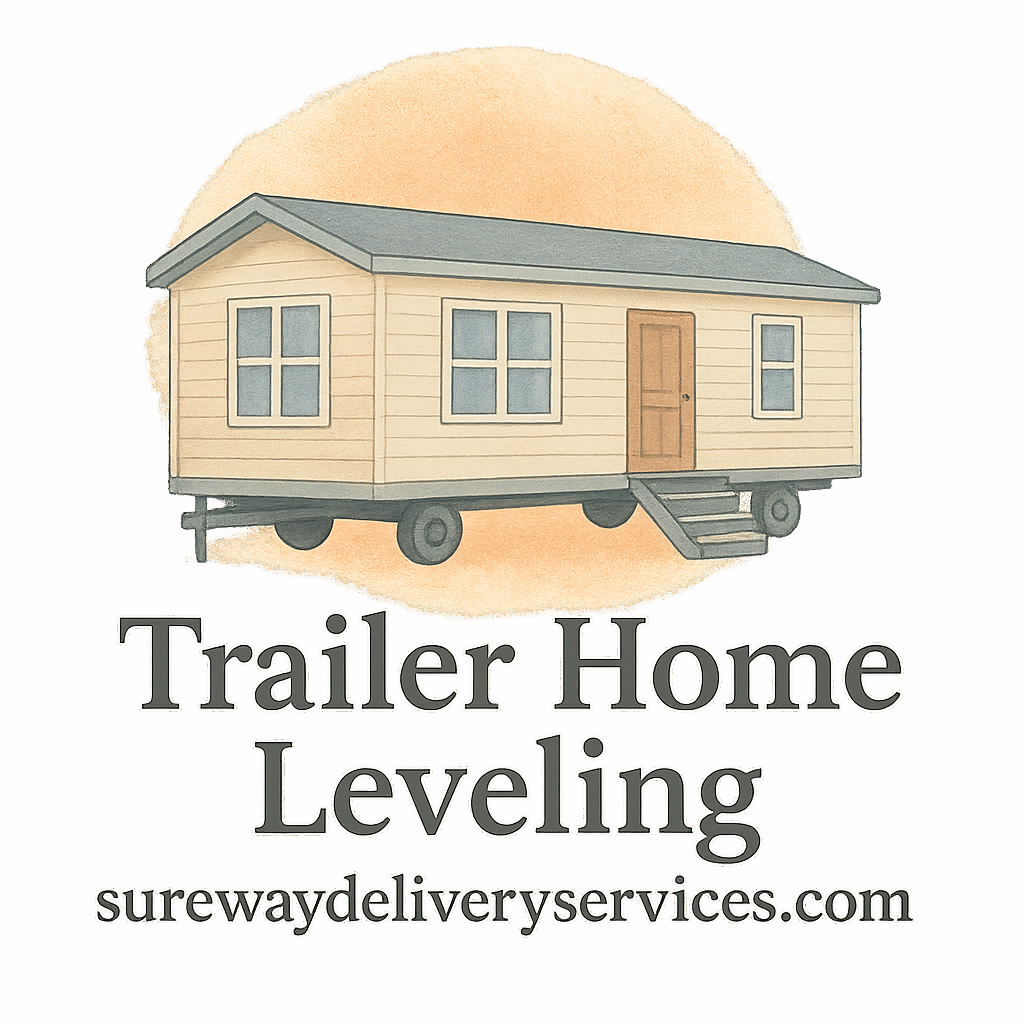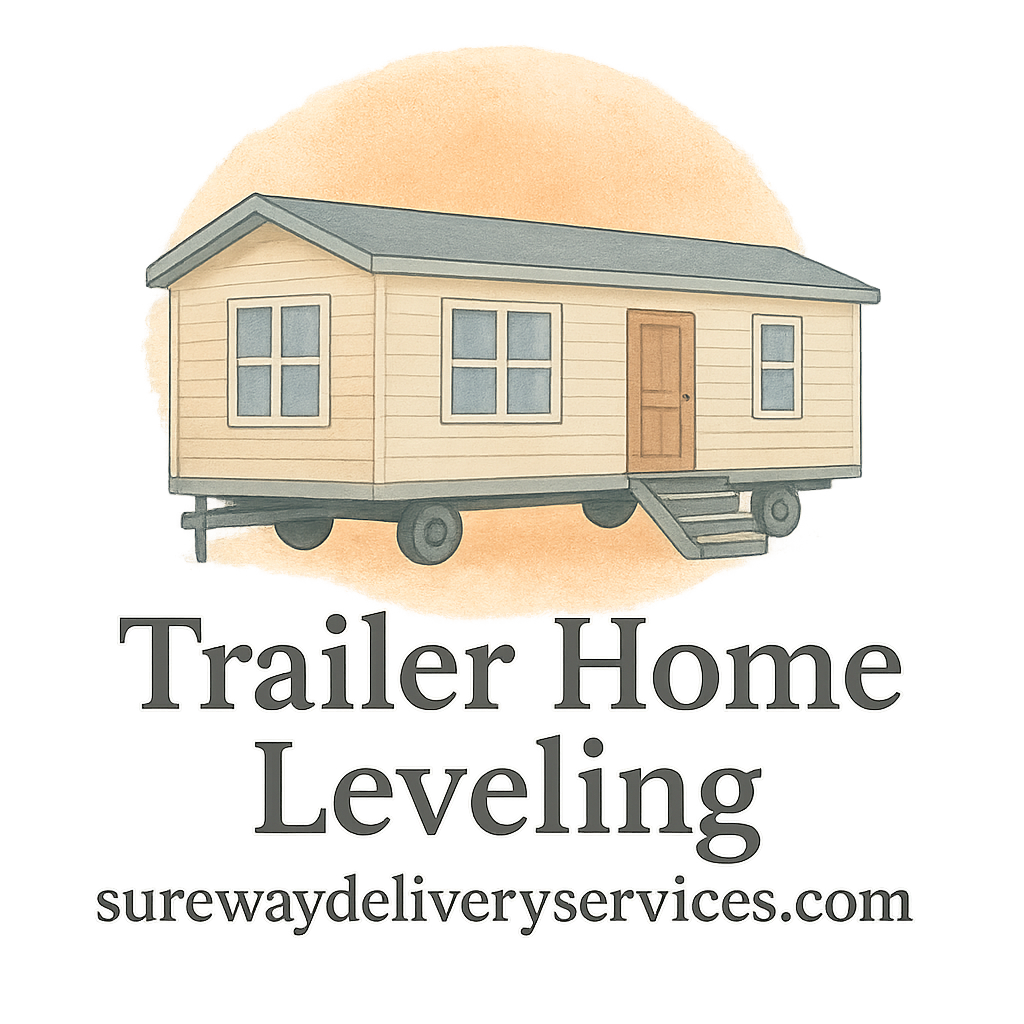Introduction to Home Leveling
Leveling your trailer home isn’t just about comfort — it’s about safety, durability, and preventing costly structural damage. Whether you’re setting up a new mobile home or noticing some unsettling creaks and slants, choosing the right home leveling method is crucial.
Looking into the basics of trailer home leveling helps you understand the why behind this necessary task.
Why Leveling Your Trailer Home Matters
Imagine walking through your home and feeling like you’re hiking uphill — not ideal, right? Uneven floors, jammed doors, or cracks in the wall are all warning signs. If you’re spotting these trailer issues, it’s time to act.
A level home ensures:
- Even weight distribution
- Structural integrity
- Comfortable living conditions
But how do you actually go about leveling a trailer home? You’ve got two broad choices: manual or hydraulic. Let’s break down both.
What Are Manual Home Leveling Methods?
Manual leveling is the old-school way — and for many homeowners, it’s the go-to due to its low cost and DIY approach. It involves physically adjusting the trailer using basic tools and methods without powered systems.
Basic Tools Used in Manual Leveling
Jacks, Levels, and Wrenches
Manual methods rely heavily on jacks and tools such as:
- Bottle or screw jacks
- Carpenter’s level
- Wood blocks or shims
- Socket wrenches
These are budget-friendly, but they also require more sweat equity.
Common Manual Leveling Techniques
The Block and Jack Method
Here, you lift the home with a jack and place blocks underneath until it’s level. It’s affordable and easy to understand but physically demanding.
Manual Shimming Method
Shims — small wedges — are placed manually to adjust the height of certain points. This works well for fine-tuning or for minor leveling adjustments.
What Are Hydraulic Home Leveling Methods?
Hydraulic leveling is more high-tech. It uses pressurized fluid to lift and adjust your trailer automatically or semi-automatically. These systems are popular in modern trailer service packages.
Tools and Technology Involved
Hydraulic Jacks and Pumps
This setup includes:
- Hydraulic pistons
- Central pump system
- Control panel (manual or electronic)
- Pressure gauges
It’s like having a remote control for your home’s foundation.
Most-Used Hydraulic Leveling Techniques
Push-Button Leveling Systems
This user-friendly approach lets you level your home by simply pressing a button. The system uses sensors and hydraulics to balance the trailer automatically.
Pressure-Based Adjustment
A bit more advanced — this method uses custom pressure readings to make precise adjustments, ideal for uneven or sloped terrains.

Manual vs Hydraulic Home Leveling: Side-by-Side Comparison
Let’s line them up so you can see which method might work best for you.
Cost Comparison: Manual vs Hydraulic
Manual methods are significantly cheaper. You’ll find most manual jobs cost between $500 to $1,000, while hydraulic leveling can soar up to $3,000–$10,000.
Need to dig deeper into leveling cost and budgeting? That’s your guide.
Efficiency and Time Required
- Manual: Time-intensive; can take half a day or more.
- Hydraulic: Takes minutes, especially with an automated system.
If you value your weekend, hydraulics win the round.
Safety and Stability
Hydraulic systems are more precise, reducing the risk of uneven weight distribution. Manual setups, if not done right, can become a hazard over time.
Check out the inspection checklist to help keep things safe regardless of your method.
Which Method is Better for You?
No one-size-fits-all answer here, but here’s a breakdown based on situation.
Choosing Based on Budget and Needs
- Manual: Great for DIYers or tight budgets
- Hydraulic: Ideal for those wanting convenience and high-tech stability
Also, customer experience is a great indicator. Skim through customer reviews before committing.
Long-Term Maintenance Considerations
Manual systems require occasional tweaks. Hydraulic systems need professional maintenance — but less frequently. Read more on maintenance and inspection tips to stay proactive.
Final Thoughts
Still torn between manual and hydraulic? Here’s the bottom line:
- Go manual if you’re budget-conscious, a bit handy, and don’t mind getting under the trailer.
- Go hydraulic if you prefer convenience, speed, and high-level precision.
Don’t forget to browse recommended techniques and tools to enhance your leveling method — whatever you choose.
Conclusion
Leveling your trailer home isn’t something you can ignore — whether it’s creaky floors or doors that won’t shut. Now that you know the key differences between manual and hydraulic home leveling, you can choose confidently based on your home, budget, and comfort level.
Use the resources at Trailer Home Leveling to guide every step, from basics to maintenance, without guesswork.
FAQs
1. What’s the easiest way to level a trailer home by yourself?
The block and jack method is a simple DIY option. Just be sure to use a level and follow a checklist.
2. Can hydraulic systems be installed on older trailers?
Yes, though some may require frame reinforcement. Ask a service professional for a detailed assessment.
3. How often should I check the level of my home?
At least annually. An annual inspection helps catch early signs before major issues appear.
4. Are there signs my trailer home is becoming unlevel?
Yes! Creaking floors, door misalignment, and visible tilts are top signs. Check our guide on signs to watch out for.
5. Do hydraulic systems require less maintenance than manual ones?
Generally, yes — but they still need periodic checkups. Learn more at trailer maintenance.
6. What’s the biggest disadvantage of manual leveling?
Manual systems are labor-intensive and require precision. Mistakes can lead to overcharges if later corrected professionally.
7. Can I mix both manual and hydraulic methods?
In some cases, yes. You can manually level first and then install a hydraulic system for future maintenance ease. Read about successful hybrid setups for inspiration.


